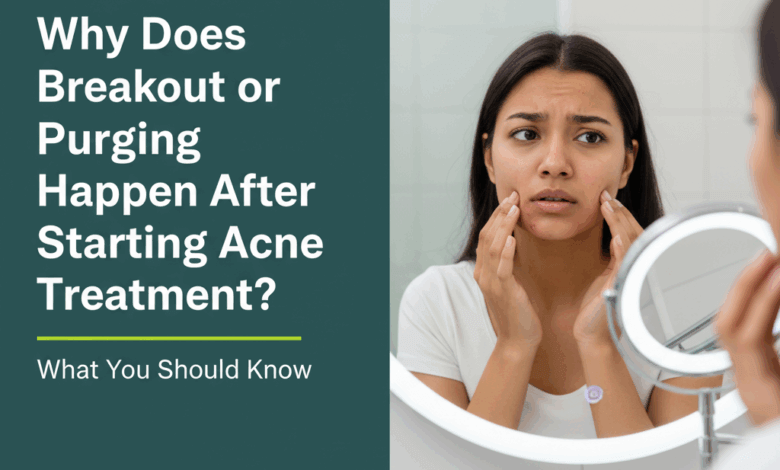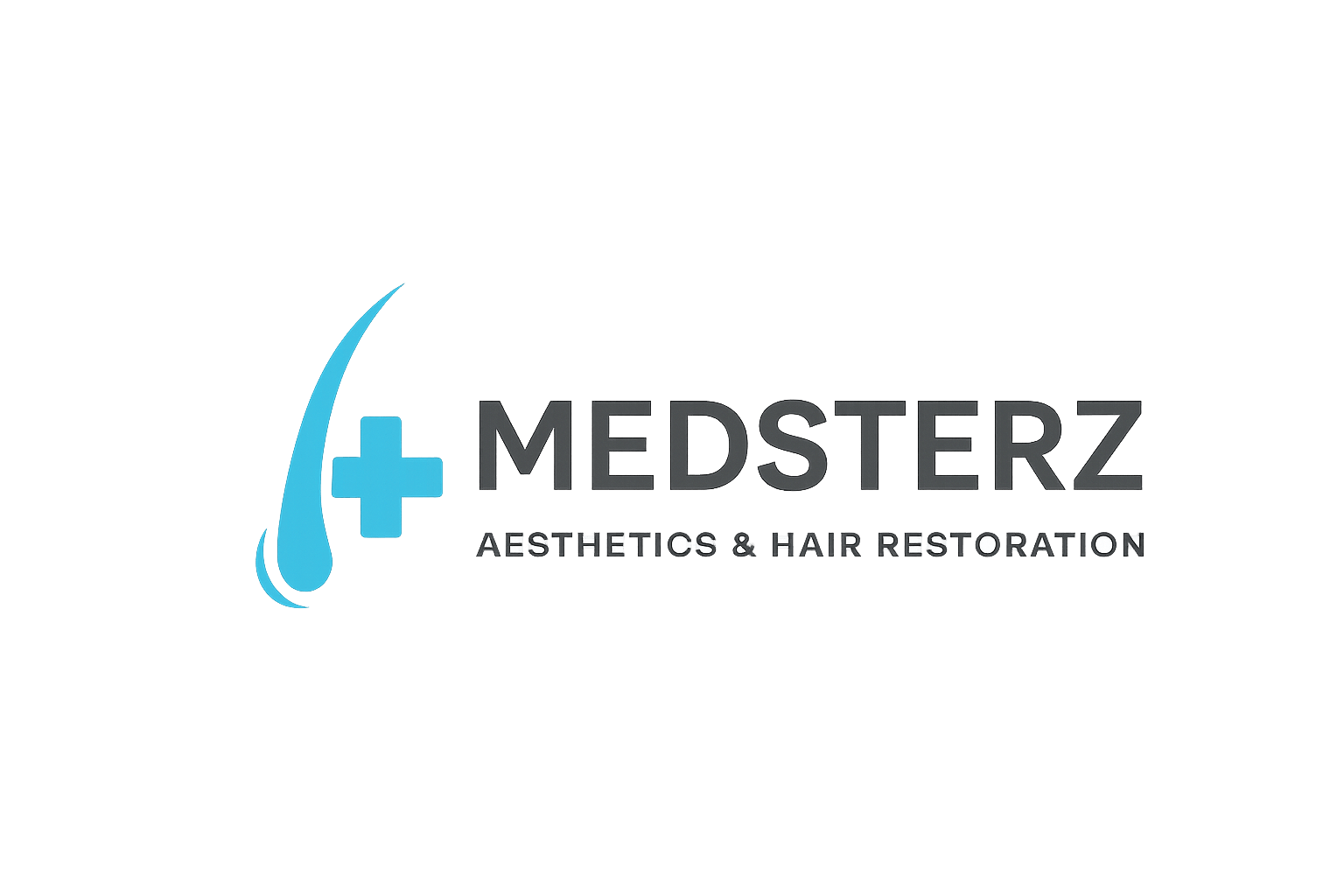Why Does Breakout or Purging Happen After Starting Acne Treatment — and What Should You Do?
Understanding why acne sometimes gets worse before it gets better — and how to handle it safely.

Introduction
Starting a new acne treatment — whether it’s retinol, chemical peels, antibiotics, or salicylic acid — can be frustrating when your skin suddenly breaks out more. This phenomenon, known as a “purge”, is common and temporary.
In this Medsterz dermatology guide, we’ll explain why purging happens, how long it lasts, and what you can do to manage it without worsening your skin barrier.
1. What Is Skin Purging?
Skin purging is your skin’s way of speeding up cell turnover.
When active ingredients like retinoids, AHAs, BHAs, or Vitamin C accelerate the exfoliation process, they push clogged pores and underlying impurities to the surface faster than usual — causing temporary breakouts.
This isn’t new acne — it’s the skin clearing itself from within.
2. Common Treatments That Cause Purging
Purging usually happens with active exfoliating or acne-clearing agents, such as:
-
Retinoids (Tretinoin, Adapalene, Retinol)
-
Chemical exfoliants – AHA, BHA, glycolic acid, salicylic acid
-
Benzoyl Peroxide
-
Azelaic Acid
-
Professional chemical peels or microdermabrasion
3. Why Does It Happen? (Scientific Explanation)
Your skin’s natural cycle is about 28 days.
When you start an active acne treatment, that cycle speeds up — meaning existing microcomedones (tiny clogged pores) that were under the surface are brought up faster.
📘 Scientific Evidence:
-
A 2022 review in the Journal of Clinical and Aesthetic Dermatology explained that retinoids accelerate epidermal turnover, leading to a transient flare-up before improvement.
-
A 2024 dermatologic study found that purging is most common during the first 4–6 weeks of retinoid therapy and usually subsides as the skin adapts.
4. How to Tell if It’s a Purge or a Bad Reaction
| Feature | Purging | Irritation / Reaction |
|---|---|---|
| Onset | Within 3–10 days of starting new product | Anytime after |
| Duration | 4–6 weeks (temporary) | Persistent or worsening |
| Location | Areas where you usually break out | New or unusual areas |
| Sensation | Mild redness or small whiteheads | Burning, peeling, itching, swelling |
If your symptoms include pain, dryness, or inflammation, it may not be purging — stop the product and see your dermatologist.
5. What to Do During the Purging Phase
✅ Be patient: Purging means your treatment is working.
✅ Hydrate & moisturize: Support your skin barrier with ceramide-rich or niacinamide-based moisturizers.
✅ Avoid new products: Introducing multiple actives increases irritation.
✅ Use sunscreen daily: Retinoids and acids make skin photosensitive.
✅ Stick to gentle cleansers: Avoid harsh scrubs or alcohol-based toners.
6. How Long Does It Last?
Purging typically lasts 4–8 weeks depending on:
-
Skin type
-
Strength of product used
-
Frequency of application
Once the skin adjusts, breakouts reduce and texture improves noticeably.
7. When to Consult a Dermatologist
You should seek professional guidance if:
-
Breakouts persist beyond 8 weeks
-
You experience painful cystic acne
-
Skin becomes inflamed, burning, or peeling excessively
Your doctor may adjust your dosage, add a mild steroid, or recommend alternating nights of use.
8. Long-Term Outlook
After the purge, your skin becomes smoother, clearer, and healthier. The key is patience, consistent care, and professional guidance.
“Purging is often misunderstood — it’s not treatment failure. It’s your skin pushing impurities out, a short phase before visible improvement.”
Conclusion
If you experience breakouts after starting acne treatment, don’t panic.
Purging is a temporary phase that indicates your skin is responding to treatment. With proper aftercare and patience, you’ll soon enjoy clearer, brighter skin.
